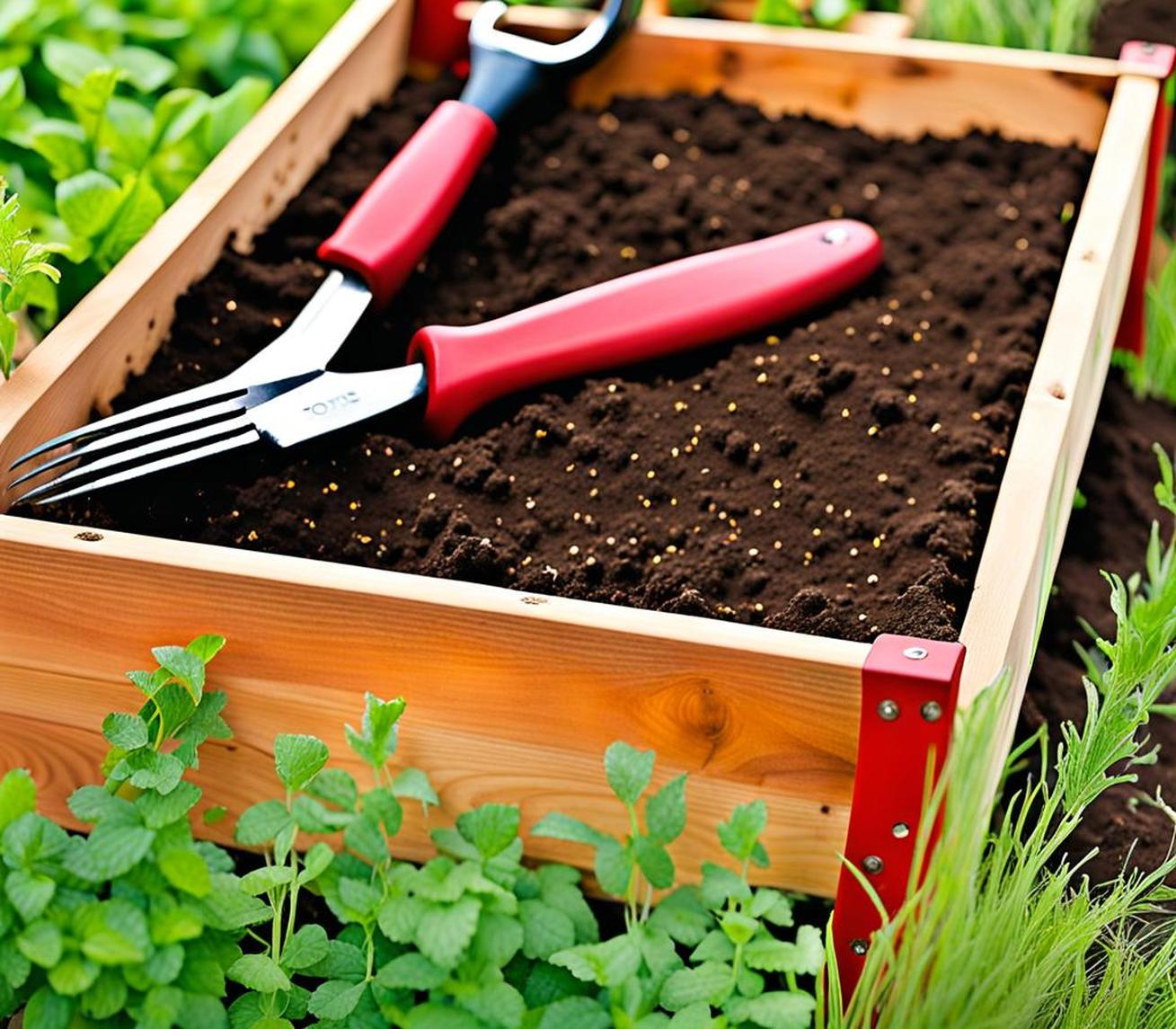For many gardeners, traditional in-ground gardening can feel like an endless battle against weeds, pests, and poor soil. No matter how much effort you put in, it always seems overrun with problems. If this sounds familiar, it may be time to try raised bed gardening instead.
Raised beds make growing fruits, vegetables, and flowers much simpler. The confined space allows you to control the soil quality and provides good drainage. Weeds are unable to spread extensively. You can more easily tend to plants without compacting surrounding soil. With the right tools, raised beds take much of the hassle and backache out of gardening.

Top Tools for Building Raised Beds
Constructing the raised bed frame itself takes a bit of manual labor. But these basic tools make the process far easier:
- Spade/shovel – Use a spade or shovel to break ground and dig out the area for installing your raised bed frames. Look for ones with a sturdy steel head.
- Rake – Before building, rake the area thoroughly to remove debris and level out the soil. A bow rake with tines works best.
- Measuring tape – Measure and mark the exact bed dimensions before assembling frames. Get precise 90-degree corners.
- Carpentry tools – Hammers, levels, drills, and saws help construct wooden framed beds securely.
- Garden hose – Lightly water soil while building to reduce dust and improve compaction.
- Wheelbarrow – Transport additional soil, compost, or other amendments to fill your new raised beds.
Essential Tools for Planting
Once your beds are built, it’s time to plant! Ensure success starting out by using these vital planting tools:
- Trowel – A hand trowel allows easy digging of holes for transplants, bulbs, and seeds. Look for one with a long-lasting steel blade.
- Hand cultivator – Loosen soil and create tidy rows with a hand cultivator or rake before sowing seeds.
- Garden fork – If soil seems compacted, gently turn and aerate it with a fork before planting.
- Garden scissors – Prune any damaged roots or leaves on new plants or transplants.
- Watering can – After planting, thoroughly water transplants to remove any air pockets in the soil.
Must-Have Tools for Maintaining and Weeding
Keeping beds looking neat is much easier with this toolkit for quick raised bed maintenance:
- Cape Cod weeder – The angled blade of this classic weeder easily removes weeds between plants.
- Handheld hoe – Gently scrape up small weeds just under the soil surface with a handheld hoe.
- Hori hori knife – Use the serrated edge of this versatile knife to mulch beds, edge borders, and weed tightly spaced areas.
- Garden tweezers – Pluck individual weeds without disturbing nearby roots using precision tweezers.
- String trimmer – Keep grass and weeds in check around the edges and sides of your raised beds.
Helpful Tools for Harvesting
Once plants start producing, having the right harvesting tools makes gathering your crops much easier:
- Bypass pruners – Cut stems cleanly when harvesting produce like peppers, eggplant, or herbs.
- Garden scissors – Quickly snip greens, herbs, and other delicate foliage.
- Basket/bucket – Collect freshly harvested produce safely in a basket, colander, or 5-gallon bucket.
- Gardening gloves – Protect hands from thorns on berries or prickly squash plants during harvest.
Soil Care Tools
Nourishing your raised bed soil ensures better plant performance. Use these tools to maintain ideal soil quality:
- Soil test kit – Check pH and nutrient levels with an at-home test kit, then amend soil as needed.
- Garden fork – Regularly turn over and aerate soil to improve drainage and oxygen circulation.
- Compost/manure – Mix 1-2 inches of compost or composted manure into beds each season to enrich soil.
Extras for Convenience and Efficiency
Finally, make your raised bed gardening as easy as possible with these convenient extras:
- Wheelbarrow – Transport tools, soil, compost, and harvested crops around your yard. Choose one with good capacity.
- Garden cart – Easily haul heavy loads like soil bags or mulch. Carts with big pneumatic tires roll smoothly.
- Small hand shovel – Scoop compost, fertilizer, mulch, and soil amendments as needed in beds.
- Bucket caddy – Corral hand tools in one place so they’re always at your fingertips.
- Garden kneeler – Take pressure off knees during close-up tasks with a comfortable kneeler.
- Garden journal – Record planting dates, layouts, crop rotations, and other observations from season to season.
By giving you control over soil, drainage, and layout, raised beds create a much more manageable gardening environment. Using the right tools for building, planting, maintaining, and harvesting further simplifies the process. Follow this guide to ensure you have the top tools on hand to get the most from your raised bed garden with minimum stress.
New raised beds are a pleasure with a properly equipped toolbox. Spend less time fighting weeds and pests, and more time enjoying the bounty. Let these essential tools make raised bed gardening the joy it should be in your yard!
